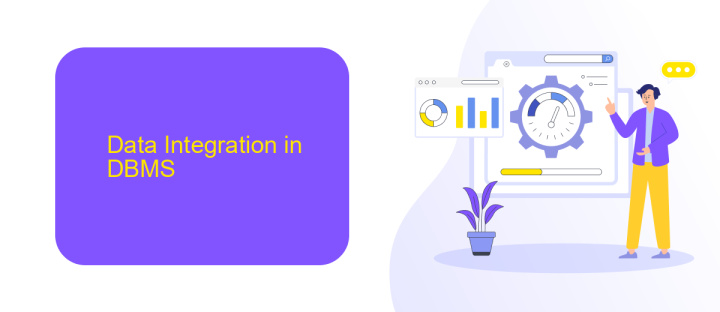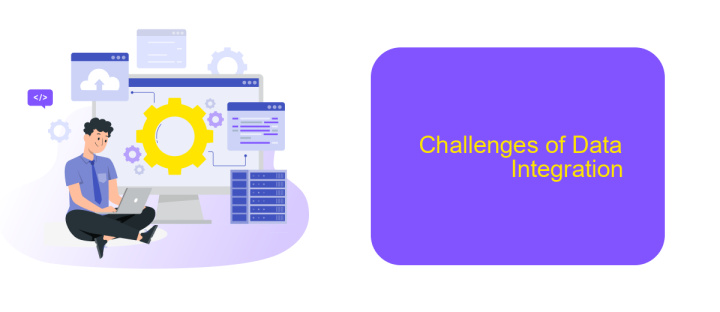What is Data Integration in DBMS
Data integration in Database Management Systems (DBMS) is a crucial process that combines data from different sources into a unified view, enabling more efficient data management and analysis. This process ensures that disparate data sets can work together seamlessly, providing a comprehensive and accurate representation of information, which is essential for making informed business decisions.
Introduction
Data integration in Database Management Systems (DBMS) is a critical process that involves combining data from different sources into a unified view. This process ensures that data is consistent, accurate, and readily accessible for analysis and decision-making. Effective data integration can significantly enhance the efficiency and reliability of business operations.
- Combining data from multiple sources
- Ensuring data consistency and accuracy
- Enhancing data accessibility for analysis
- Improving business decision-making processes
One of the tools that facilitate seamless data integration is ApiX-Drive. ApiX-Drive enables users to connect various applications and automate data transfers without requiring advanced technical skills. By using such services, businesses can streamline their data workflows, reduce manual errors, and ensure that their data is always up-to-date and synchronized across different platforms.
Data Integration in DBMS

Data integration in DBMS refers to the process of combining data from different sources to provide a unified view. This process is crucial for organizations that need to analyze data from multiple systems and databases. Data integration involves several steps, including data extraction, transformation, and loading (ETL). These steps ensure that data from diverse sources is cleaned, formatted, and loaded into a central repository, making it accessible for analysis and decision-making.
One of the tools that facilitate data integration is ApiX-Drive. ApiX-Drive is a service that simplifies the process of connecting various applications and services, automating data transfer between them. It supports a wide range of integrations, allowing businesses to streamline their workflows and maintain data consistency across platforms. By using ApiX-Drive, organizations can save time and reduce errors associated with manual data handling, ensuring that their data integration processes are efficient and reliable.
Benefits of Data Integration

Data integration in DBMS offers numerous advantages that significantly enhance the efficiency and effectiveness of data management processes. By seamlessly combining data from different sources, organizations can gain a comprehensive view of their operations and make more informed decisions.
- Improved Data Quality: Integrating data helps in identifying and eliminating inconsistencies, redundancies, and errors, thereby ensuring higher accuracy and reliability.
- Enhanced Decision-Making: With a unified data view, businesses can perform more accurate analyses, leading to better strategic decisions and insights.
- Increased Efficiency: Automating data integration processes reduces manual effort and time, allowing employees to focus on more critical tasks.
- Cost Savings: Efficient data integration minimizes the need for multiple data storage solutions, reducing overall operational costs.
- Scalability: Solutions like ApiX-Drive facilitate easy and scalable integration, allowing businesses to adapt quickly to growing data needs.
Incorporating data integration tools such as ApiX-Drive can streamline the process, providing robust and scalable solutions for connecting various data sources. This not only optimizes data handling but also empowers organizations to leverage their data assets fully.
Challenges of Data Integration

Integrating data from multiple sources into a single database management system (DBMS) presents several challenges. One of the primary issues is data inconsistency, where data from different sources may have varying formats, structures, or naming conventions. This inconsistency necessitates complex transformation processes to ensure data uniformity.
Another significant challenge is data quality. Data from disparate sources can often be incomplete, outdated, or inaccurate, requiring rigorous cleansing and validation procedures. Additionally, data integration may encounter issues related to data duplication, where the same data appears multiple times across different sources, leading to redundancy and potential inaccuracies.
- Data inconsistency
- Data quality issues
- Data duplication
- Security and compliance concerns
Security and compliance are also critical challenges in data integration. Ensuring that data integration processes comply with data protection regulations and maintaining the security of sensitive information is paramount. Tools like ApiX-Drive can simplify these processes by automating data integration, reducing manual errors, and ensuring that data flows seamlessly between systems while adhering to compliance standards.
- Automate the work of an online store or landing
- Empower through integration
- Don't spend money on programmers and integrators
- Save time by automating routine tasks
Conclusion
Data integration in DBMS is a critical component for organizations looking to harness the full potential of their data. By seamlessly combining data from various sources, businesses can achieve a unified view, enabling more informed decision-making and streamlined operations. This process not only enhances data quality and consistency but also reduces redundancy, leading to more efficient data management.
Incorporating tools like ApiX-Drive can further simplify the integration process. ApiX-Drive offers a user-friendly platform for automating data transfer between different systems, ensuring real-time synchronization and minimizing manual intervention. By leveraging such services, organizations can focus more on analyzing and utilizing their data rather than getting bogged down by the complexities of integration. Ultimately, effective data integration empowers businesses to stay competitive and responsive in an increasingly data-driven world.
FAQ
What is Data Integration in DBMS?
Why is Data Integration important?
What are the common challenges in Data Integration?
How can automation help in Data Integration?
What are the steps involved in Data Integration?
Routine tasks take a lot of time from employees? Do they burn out, do not have enough working day for the main duties and important things? Do you understand that the only way out of this situation in modern realities is automation? Try Apix-Drive for free and make sure that the online connector in 5 minutes of setting up integration will remove a significant part of the routine from your life and free up time for you and your employees.


